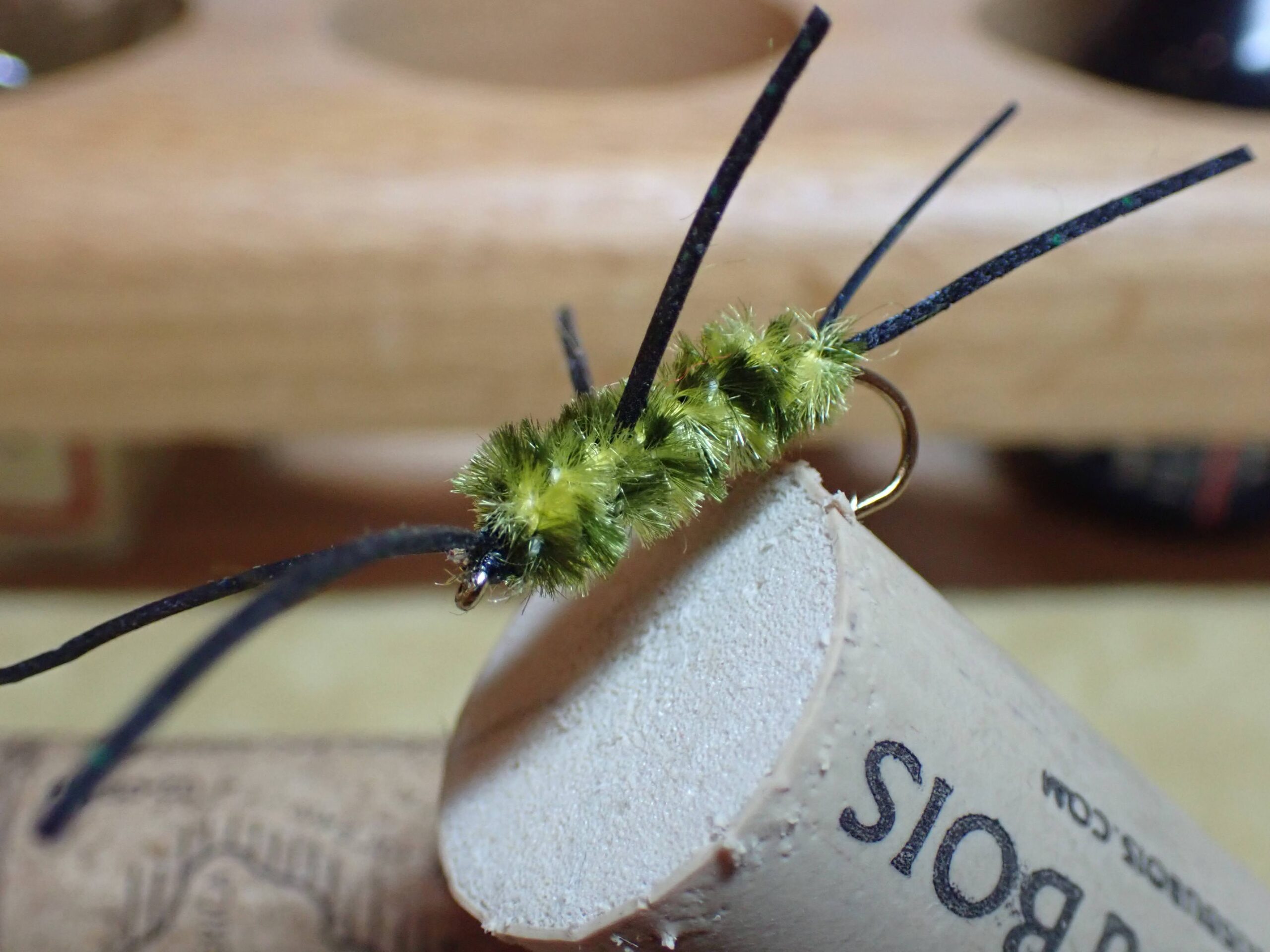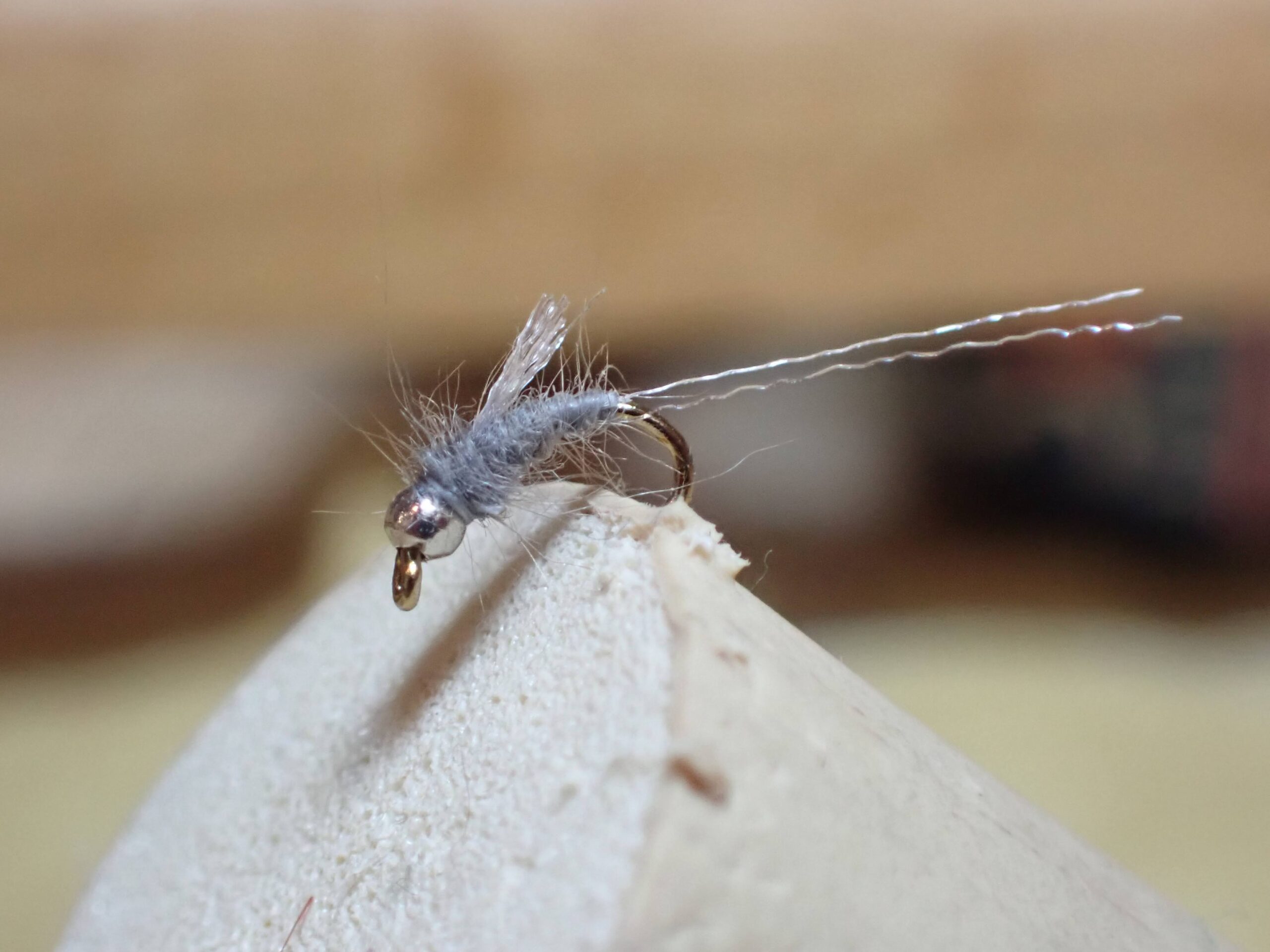Olive Perdigon 03/05/2025 Photo Album
I tied a few of these simple flies in 2020 during Covid to kill time while quarantined. I used them infrequently, and like many new patterns they lingered in my fly box, as I opted for tried and true patterns that I had confidence in.
Fast forward to 11/04/2023. If you read this post, you learn that I had an outstanding fall day on the Eagle River, when the olive perdigon delivered superior results for my friend, Dave G. and me. Needless to say, this prompted me to tie a batch, but I must confess that I did not test them to any great extent during 2024. I plan to make amends for this oversight, and as a result I approached my vise and produced five additional olive perdigons. I am confident that if I give them a chance, they will become a new favored fly from my fleece wallet.
 A Batch of Five and Associated Materials
A Batch of Five and Associated Materials
This fly is quite easy to tie, although I am not a fan of messing around with UV resin application. I have squeeze tubes, and the caps become a gooey mess. I plan to switch over to product with applicators, but being a frugal fly tier, I am attempting to use up the resin in my tubes. These olive perdigons require only six materials if you count the hook, bead and a black marker. Otherwise, all you need is some grizzly spade hackle fibers, olive thread and UV resin. The result is a very slender heavy fly that rapidly sinks to the bottom. If I can discipline myself, I would like to test these in pocket water, where it is necessary to get the fly to the bottom quickly. Doesn’t it seem like this is a perfect application for the olive perdigon?

 Slender Nymph
Slender Nymph Wiggle Damsels from My Storage Container
Wiggle Damsels from My Storage Container Lots of San Juan Worms
Lots of San Juan Worms Close Up of Crystal Stone
Close Up of Crystal Stone Two New Crystal Stones
Two New Crystal Stones Dangling Legs
Dangling Legs A Different Angle
A Different Angle Three New Rubber Legs
Three New Rubber Legs Size 20 with Copper Wire
Size 20 with Copper Wire Red Rib Version
Red Rib Version A Batch of Three with Two Necessary Materials
A Batch of Three with Two Necessary Materials Nice View of a Salad Spinner
Nice View of a Salad Spinner Two New Salad Spinners and Required Materials
Two New Salad Spinners and Required Materials Size 20
Size 20 Side View
Side View Seven New Soft Hackle Emergers
Seven New Soft Hackle Emergers Sparkle Wing RS2
Sparkle Wing RS2 Batch of Eight
Batch of Eight Rather Scruffy
Rather Scruffy Three Replacements
Three Replacements